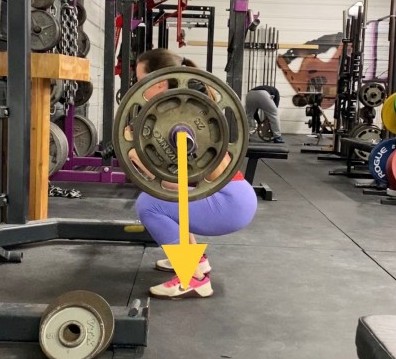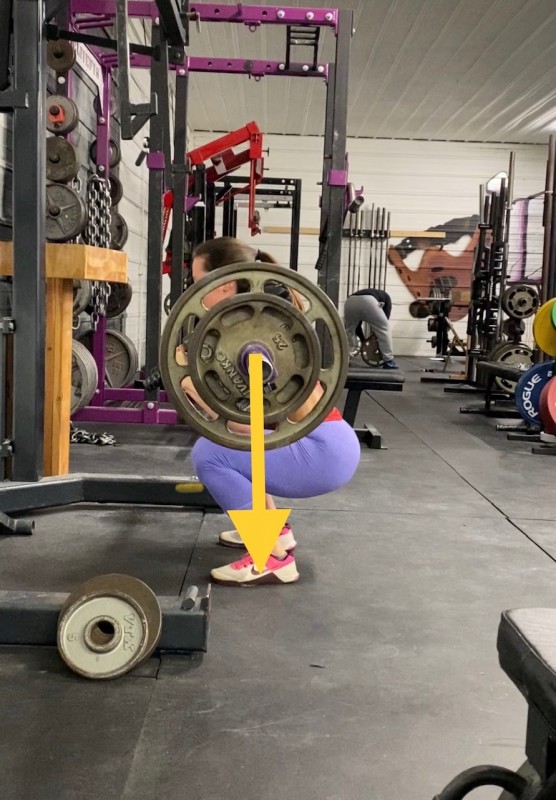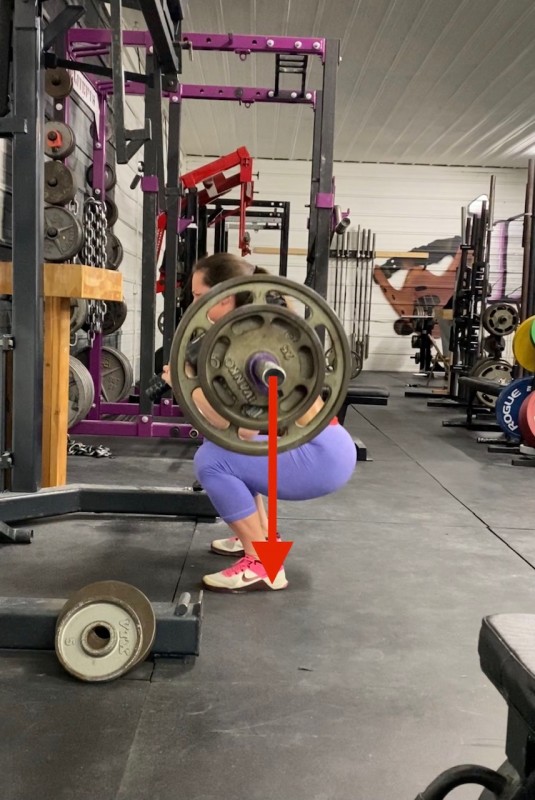
During my squats the other day, I completed a really great set of squats. Everything felt solid, fast and strong. By the time I completed my third set, I could feel fatigue set in, resorting to old habits.
Let's take a look at these two positions:
Here we have the first rep of the set. You can see with the arrow that the bar is positioned directly over the middle of the foot. We can even get really technical and look at the angle of the knee flexion (and how close the hamstring is to the calf.)
The last rep, below, I hinged, but then kept sitting back, just like my old habits. You can see how the bar is now more toward the back of the foot. If you look at the knee angle you can see how the hamstring isn't smashed into the calf nearly as much as the above picture.
So what does that mean? It's such a small, minute detail, is it really even worth noting?
It depends on the client/person, but for some, yes it does matter. For me, I can notice this small difference and I know that when I sit back too much, I have a tendency have my hips rise first out of the hole, because my shoulders are more forward and hips are further back. If you look at the torso angle in the second picture, you can see how someone who has a hard time keeping the upper back tight or looses their upper back in the hole would have a hard time in this position (sitting back too much).
These types of details need to be taken into account when noticing someone's strengths, weaknesses, and how they may need to squat. News flash: Just because your favorite lifter squats a certain way doesn't mean you should be squatting just like that!










